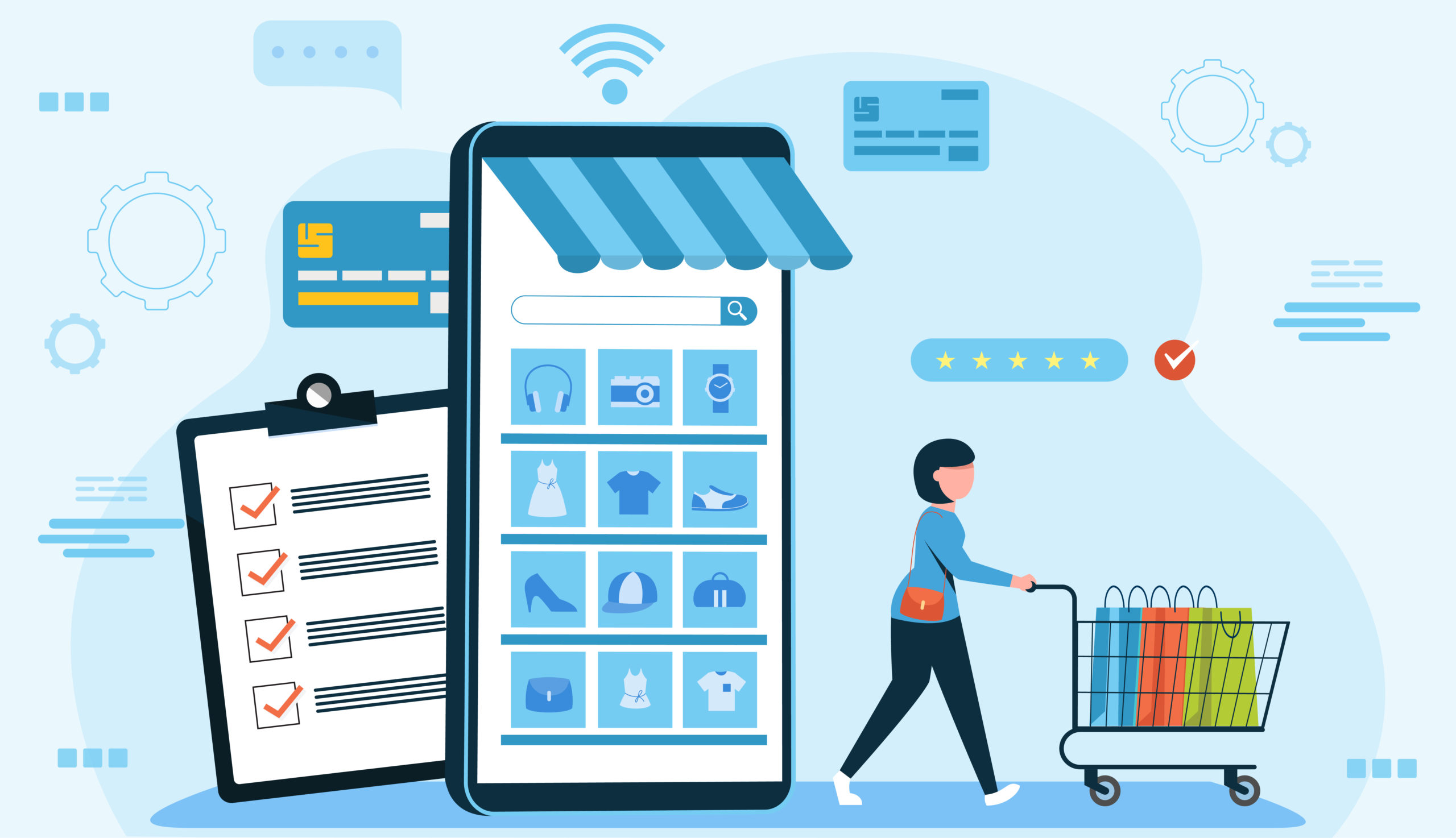There are many different ways to promote your mobile app: video ads, social, rewarded engagement, and dozens (at least) more. But each method directs users straight to your app store page. On top of that, more than half of all global app store downloads come from searches within those stores. No one element of your marketing may have a more profound impact on your app’s success than its store presence, which means app marketers of all stripes should know how to improve app store conversion rates.
But how do you know if your conversion rates are measuring up, and how to improve them or keep them pointed in the right direction? That’s what this guide will answer — starting with some ground-floor stats.
What is the Benchmark for App Store Conversion Rates?
The benchmark for app store conversion rates is, on average, 30.3% on iOS and 33% on Google Play. That means roughly one-third of mobile users who navigate to an app’s store page install that app, regardless of platform. That’s a helpful baseline, but keep in mind that specific conversion rates vary widely by app category. On iOS, for instance, users searching for photo and video apps install from the store page just over 3/4 of the time, while slightly under one in 10 visits to a game’s store page will result in a conversion. Meanwhile, Android gamers are almost twice as likely to install from the store page than Apple users.
Keep those discrepancies in mind as you work to improve app store conversion rates for your portfolio. While the general principles of app store optimization (ASO) apply to both iOS and Android, you should follow specific best practices for each platform.
Fortunately, you don’t have to sort through mountains of documentation and advice to improve your results: consult our one-page Ultimate ASO Checklist for the Apple App Store if you’re focused on iOS, or our similarly speedy Ultimate ASO Checklist for Google Play to build conversion on Android.
10 Ways to Improve App Store Conversion Rates
Now that you know a realistic conversion rate to aim for based on your platform and category, let’s talk about some concrete steps you can take to make your app listing bring in more users.
Hone Your App Icon
Your app’s icon is likely to be the very first impression a potential new user has of your product. It’s a big responsibility for a little square graphic, and there are three basic schools of thought for creating the ideal app icon.
- Character-centric design leans on two basic concepts of psychology: People are visually attracted to faces, and you’re more likely to feel connected to a human-like character than a vague concept. This is easy to pull off for games that already feature distinct character designs, but will require more effort for other apps.
- Branding/title-centric design: This approach is well suited for established brands since it puts your recognizable logo (or part of your logo, such as its first letter) front-and-center, with any other elements secondary.
- Function-centric design: This is used to communicate an app’s primary purpose. Think of the kinds of icons Apple favors for iOS’ built-in apps: A notebook for a notebook, an intricate series of gears for settings, and so on.
Whichever school of thought you follow, make sure your design is simple and scalable, since it will appear in a myriad of shapes and sizes across the stores and your branding.
A/B Test Your Creative Assets
The screenshots and videos that appear on your store page are easily the most eye-catching part of the listing, and they may even be featured in the search results themselves. In other words, it’s extremely important to get them right — too important to leave to chance. Fortunately, both the App Store and Google Play support A/B testing for your app’s featured screenshots and videos. Capitalize on this feature by making big changes between media at first (such as which subjects and types of messages you depict) and seeing which performs better, then moving on to smaller details such as choice of font and the shape of graphical elements.
Don’t forget that iPhone and Android users have different tastes — you shouldn’t assume the same assets will work as well on one platform as they do on the other. Maintain separate pipelines for the two if possible.
Cultivate Your Reviews
Apple and Google want their users to have positive experiences while using their devices. Even though they don’t exert direct control over which third-party apps users install (beyond deciding which ones are permitted on the platform to begin with), they do prioritize better-rated ones in search results. And even though app publishers are not allowed to directly encourage users to leave positive reviews, they can do so indirectly.
Start by only prompting users to leave reviews at a point they’re most likely to be satisfied with your app, such as after finishing a level in a game or learning how to complete a work project. Then follow up by quickly responding to any negative reviews with confirmation that their feedback has been heard and any suggestions for how they can improve their experience — users who feel seen are much more likely to give your app a second chance and change their review for the better.
Monitor and Revise Your Keywords
Your keywords are the terms you target to bring people to your app. Their specific implementation varies across platforms, but wherever you are, keywords play a massive role in helping potential users find your app in the store. When we’re talking about conversion, however, that road cuts both ways: Your keywords should be laser-focused on bringing in users who want to try out your app, not keywords that seem to be popular search terms in general but aren’t necessarily a perfect fit. If your app doesn’t fit the bill of what a user searched for, at best they’ll just bounce, and at worst they’ll try your app, realize it wasn’t what they wanted, and leave a bad review.
Make sure you regularly consult App Store Connect or the backend tools for Google Play to see what keywords are bringing users in and which ones aren’t carrying their weight. Then regularly monitor and tweak your chosen set of keywords in response to market conditions and your app’s evolving offerings.
Remember Readability
Your app store listing is going to be read by real people, not just a search engine. While you should build toward ASO where it makes sense, that optimization should never come at the expense of the users who are going to cast their eyes over the page and decide if your app is worth their time. One of the most important things you can do to improve app store conversion rates is to speak honestly in plain language about why people should give your app a try. Arriving at the perfect formula of keywords per paragraph may make a search engine happy, but it won’t do you much good if it comes across as forced and artificial to readers.
Increase Application Speed
Speed is a critical factor for user retention. Ensure your app loads pages instantly without lag or delays – downtime risks losing 53% of mobile site visitors. Optimizing performance enhances not just satisfaction but conversion rates. For instance, Amazon’s app prioritizes blistering speeds allowing shoppers to swiftly browse and purchase without friction. Integrate caching, review sluggish endpoints, and compress resources to emulate such seamlessness. Deliver experiences leaving users zero time dwell on potential abandonment.
App Store Optimization (ASO)
App Store Optimization (ASO) continually adjusts listing elements to match high-demand positioning priorities. This strategic process mandates regular reevaluation as rankings fluidly shift reflecting trending interests. An irresistible title, enticing screenshots, and inclusion of popular keywords in your description all sway install decisions even amidst fiercest competition. For example, Tinder intentionally integrates relationship-related keywords to consistently secure top visibility for dating-oriented searches. Develop hypotheses around terminology users enter when seeking apps like yours, then test which A/B listing variations exhibit greatest appeal. There is no set-and-forget formula in elevating exposure.
Utilize Social Proof
Prospective users inherently trust firsthand experiences over branded promises. That’s why visibly showcasing feedback from active installers will always eclipse your wildest marketing claims. Include user testimonials prominently in listings and amplify ratings/reviews especially from recognized media. For example, Airbnb cements credibility by putting its 4.8-star average front and center alongside gushing traveler impressions. If your app offers forums or user profiles, highlighting these communities signals retention rates and establishes a welcoming environment through transparency.
Personalized User Experience
Generic experiences will only sustain engagement temporarily before interest expiration. But understanding precise user likes/behaviors and catering unique suggestions keeps your product sticky. For instance, Netflix analyzes each viewer’s individual streaming history to dish up new series or films it predicts they will relish based on previous enjoyment. Some apps even adapt interfaces or in-app rewards based on usage patterns. Every user believes their preferences wildly unique. Continually remind them yours align. The customized feeling this instills earns loyalty beyond fleeting fads.
Utilize Deep Linking
Eliminate obstacles on adoption journeys by transporting audiences directly into your app’s most alluring interiors upon first arrival. Deep linking appends pointers to external promotional material guiding new visitors instantly to your stickiest content hubs rich with visual candy and interactive education. For instance, Pinterest’s Pin Marklet bookmarklet lets browsers save tantalizing images straight into bespoke topic boards with one click rather than generic home feeds. And your sign-up entrance could land explorers atop the wow product reveal rather than a stale splash graphic. Meeting motivation with instant reward greases conversions faster than any friction-laden traditional funnel
Boost Your App Store Conversion Rates
Looking for more ways to make ensure the right users find your app? Working with a partner that understands how to make app store visibility goals a reality is one of the best ways to grow your install base. At AdAction, we know how to improve and optimize your app store presence while managing keyword rankings to bring in more users. Set up a demo today to learn more about how we can help.


Nick is a seasoned digital marketing expert with multifaceted expertise across SEO, paid media, content marketing and data analytics. Leveraging the latest technologies, Nick future-proofs brands through integrated strategies that enhance their visibility and maximize ROI.


